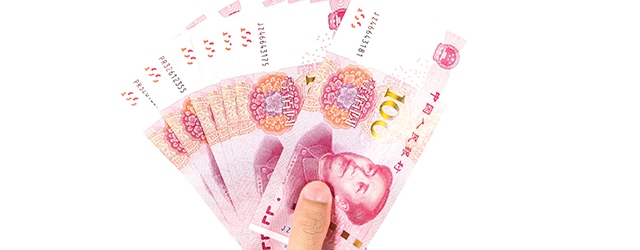The Belt and Road Initiative will spur China’s much-desired internationalization of the renminbi, but thereare obstacles.

Unveiled in 2013 by the Chinese, the program known variously as One Belt, One Road (OBOR) or Belt and Road Initiative (BRI) will strengthen social, trade and economic cooperation across more than five dozen Asian Pacific, European and African countries. Chinese figures for planned investment range from $1 trillion to $8 trillion. But at least some of that spending may be in renminbi rather than dollars.
“Now is a good time for the Chinese government to make more efforts to promote the use of renminbi,” says OCBC Wing Hang Bank economist Carie Li. According to Li, 2017 Chinese exports to BRI countries increased 12% from 2016, while imports grew 27%.
Currencies complicate cross-border transactions. A widely usable renminbi would reduce costs of trading, account settlement times, financing shortfalls and exchange-rate risk for Chinese businesses.
Li says BRI countries such as Russia, Iran, Pakistan, Malaysia, Vietnam and India are increasingly using renminbi for trade settlement. “They’re quite underdeveloped and they need to rely on China’s fast economic development,” she says. She cites a new Iranian hydroelectric dam that is using renminbi for payments.
Many BRI projects are infrastructure- and energy-related, which could increase the trading of certain commodities. Today, many commodities are priced in US dollars, but that’s changing. On March 26, for example, China debuted a yuan-denominated oil futures contract on the Shanghai exchange.
Andy Seaman, chief investment officer of fund manager Stratton Street, highlights China’s more than $3 trillion in foreign reserves. “That’s an enormous amount of firepower,” he says. “Treasuries can be recycled into something more productive, like One Belt, One Road.” Stratton Street manages $1.5 billion, including a renminbi-denominated bond fund. “[BRI] is another step in the same direction to create openness of China’s capital account, increase investment by Chinese institutions abroad and increase holdings of renminbi by international investors,” Seaman adds.

Seaman, Stratton Street: China’s $3 trillion in foreign reserves represent an enormous amount of firepower. |
More than five dozen countries and regions already hold renminbi reserves. Additionally, The People’s Bank of China signed bilateral currency-swap agreements with more than 30 countries.
“We expect the Belt and Road countries to use the renminbi as a reserve currency in the future,” Li says. This year, for example, Pakistan’s central bank announced that it will replace US dollar reserves with renminbi.
Although the renminbi could erode the dollar’s dominance, it will take time. According to IMF data, renminbi account for just 1% of allocated global foreign-exchange reserves; US dollars account for 63%. Additionally, the renminbi is only used for approximately 2% of global payments.
In recent years, Chinese policymakers have tightened capital controls, but timelines regarding full renminbi convertibility have not been set, and financial-system transparency has been generally lacking. To elevate renminbi acceptance—and for BRI projects to be completed—businesses and investors need confidence in the breadth, transparency, regulations, governance, currency convertibility and capital account liberalization of China’s capital market.
In an April 2018 speech, Chinese President Xi Jinping acknowledged the need to improve China’s investment environment. “We will enhance alignments with international economic and trading pools,” he said, “increase transparency, strengthen property-rights protection, uphold the rule of law, encourage competition and oppose monopoly.”
Li says the government is opening its capital account, but with caution. “The government wants it to happen slowly, gradually, so as to avoid panic in the market,” she says. According to her, a stable exchange rate has bolstered offshore liquidity.
Seaman has high hopes for the currency, as “China is opening up to market forces.” He forecasts a total annual return for renminbi of 4%, including carry, over the coming decade.
The renminbi will not spread instantaneously, but BRI projects will increase its use around the world—just as the Silk Road disseminated Chinese culture, language and goods to international partners centuries ago.



